Winter flowers bring color and joy to your home during the year’s coldest months. When daylight fades and outdoor gardens go dormant, these indoor blooms become a cheerful reminder that beauty can still thrive—even in winter. Whether you’re a beginner or a seasoned plant lover, adding flowering plants to your home is an easy way to lift your mood, clean the air, and create a cozy, vibrant atmosphere.
From the sweet fragrance of jasmine to the tropical flair of anthuriums, there’s a winter flower for every room and light condition. In this guide, we’ll explore 15 of the best indoor winter flowers for home that are both beautiful and easy to care for.
Table of Contents
Section 2: Benefits of Winter Flowers for Indoor Spaces
Adding winter flowers to your indoor space is more than just a decorative choice—it’s a decision that enhances your overall well-being. These blooms offer a surprising number of benefits that go beyond their aesthetic appeal.
1. Mood Boost and Mental Wellness
Shorter days and colder weather often lead to seasonal mood dips. Indoor winter flowers help offset that by adding life, color, and a sense of calm to your home. Studies have shown that tending to houseplants can reduce stress and anxiety, increase productivity, and even improve memory retention.
Certain blooms, like African violets or orchids, provide visual stimulation through their vibrant colors and delicate shapes—lifting your spirits even on the greyest days.
2. Natural Air Purification
Many winter flowers double as natural air purifiers. Plants like Peace Lily and Bamboo Palm can filter out common indoor toxins such as formaldehyde, benzene, and carbon monoxide. During the winter, when windows are closed and ventilation is limited, these blooms contribute to cleaner, fresher air.
Some winter-blooming species, like bromeliads and orchids, even release oxygen at night, helping you sleep more soundly.
3. A Living Element of Home Decor
Winter flowers are a low-effort way to transform a room from sterile to serene. Their bright petals and lush foliage complement every design style—from minimal to eclectic. For example:
- Use a Christmas Cactus on a windowsill for a pop of color
- Place a Cyclamen near your front entrance for a festive welcome
- Group small flowering pots like Kalanchoes and African Violets on a dining table as a cheerful centerpiece
Succulents, which also flower in winter, offer stylish options for those who want beautiful results without constant maintenance.
4. Suitable for All Skill Levels
You don’t need to be a master gardener to enjoy the benefits of winter flowers. There are easy-care options for beginners, such as:
- Poinsettia – requires basic watering and light
- Peace Lily – tolerates low light and irregular watering
- Kalanchoe – blooms for weeks with minimal attention
More experienced plant lovers can enjoy tropical or exotic flowering varieties that may need specific humidity or light levels. Whatever your skill level, there’s a winter bloomer suited to your home and lifestyle.
Section 3: How to Choose the Right Winter Flowers for Your Home
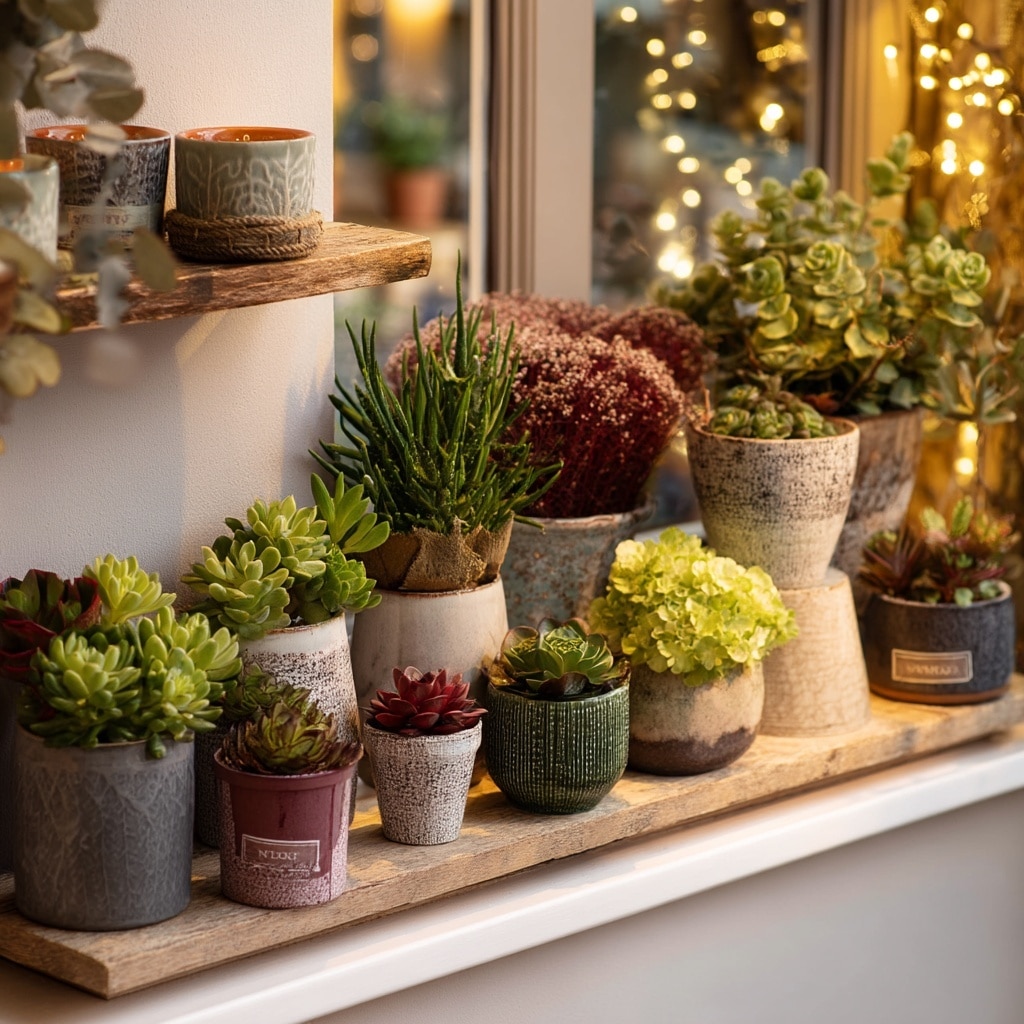
Selecting the ideal winter flowers for your indoor space starts with understanding your environment. Every plant has different needs—so matching their light, temperature, and humidity preferences to your home will set you up for success.
Consider Light Levels
Light is one of the most important factors when choosing winter flowers. Since natural sunlight is limited in winter, you’ll want to assess the amount of light each area in your home receives.
- Low-light areas (north-facing windows or corners):
- Great picks: African Violet, Peace Lily, Snake Plant
- Bright indirect light (east- or west-facing windows):
- Ideal for: Anthurium, Orchids (Phalaenopsis), Christmas Cactus
- Direct sun or very bright spots (south-facing windows):
- Best for: Kalanchoe, Desert Rose, Bird of Paradise
If natural light is scarce, consider using grow lights to supplement your plants during the darker months.
Watering and Humidity Needs
Overwatering is a common mistake with winter flowers, especially when plants are semi-dormant. Always check the top inch of soil before watering.
Some general watering tips:
- Cyclamen prefers cooler temps and needs careful watering at the base to prevent rot
- Kalanchoe and Desert Rose thrive with infrequent watering
- Orchids need weekly watering and benefit from humidity trays
Maintain indoor humidity between 40–50% by grouping plants together or using a humidifier.
Temperature Tolerance
Most indoor winter flowers prefer daytime temperatures between 65–75°F (18–24°C) and cooler nights. Avoid placing plants near drafty windows, radiators, or heat vents. Sensitive varieties like Poinsettia or Cyclamen can wilt quickly in unstable temperatures.
Match Plants to Your Lifestyle
Ask yourself:
- How much time do you have for plant care?
- Do you prefer flowers that bloom for weeks or months?
- Are there pets in the home? (Some plants, like lilies, can be toxic.)
If you’re a beginner, start with low-maintenance bloomers like Christmas Cactus, Kalanchoe, or Peace Lily. More advanced growers may enjoy the challenge of tropical species like Jasmine or Bird of Paradise.
Section 4: 15 Best Winter Flowers to Brighten Up Your Indoor Space
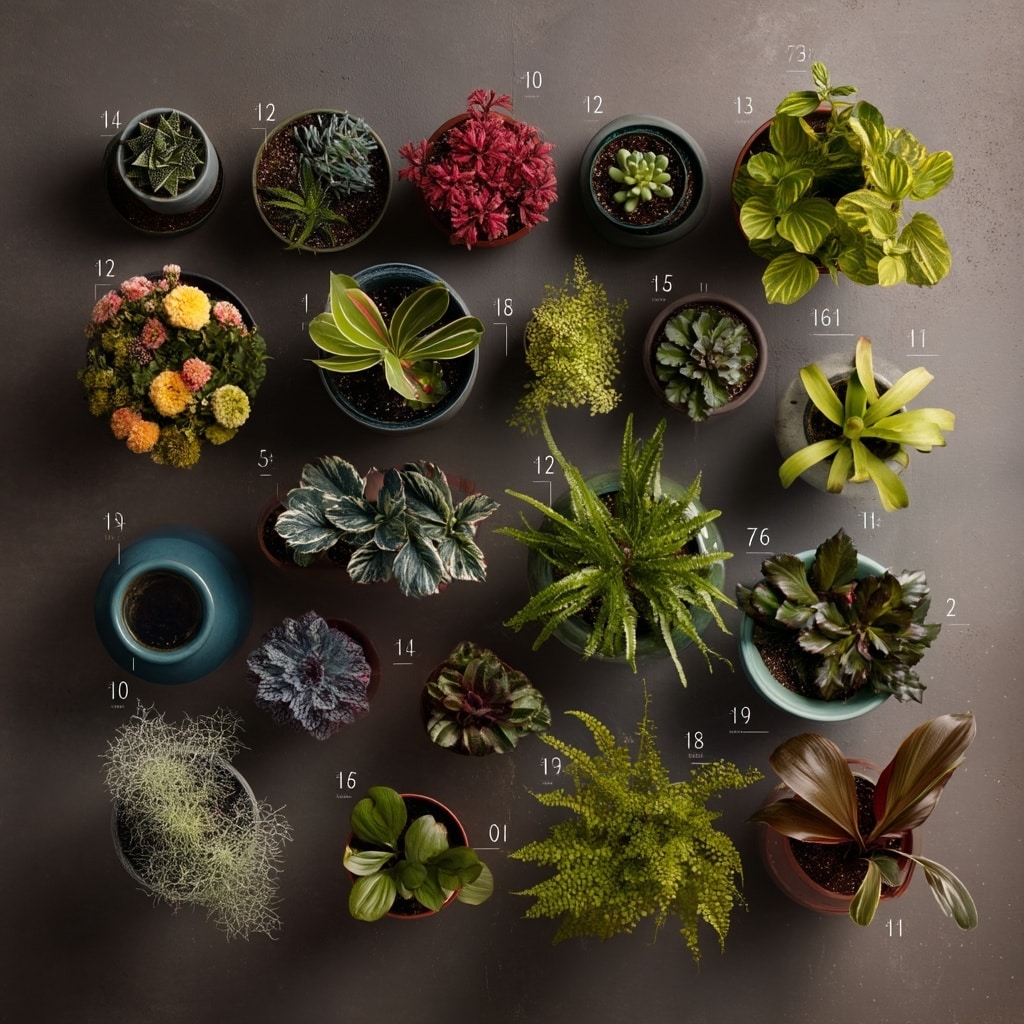
These handpicked winter flowers are perfect for adding vibrant color, fresh fragrance, and cheerful energy to your home during the colder months. Whether you have bright sunlight or shaded corners, there’s a winter bloomer suited for every room.
1. Jasmine (Jasminum spp.)
Fragrant and delicate, jasmine thrives in bright, indirect light and cooler nighttime temperatures. Encourage blooming by giving the plant a short rest period in fall. Its sweet scent can refresh your entire room.
- Light: Bright indirect
- Watering: Keep soil lightly moist
- Bonus: Natural air freshener
2. Anthurium (Anthurium andraeanum)
Known for its glossy, heart-shaped flowers, anthurium blooms in shades of red, pink, lavender, or white. It flowers year-round, making it one of the most consistent winter flowers for indoor settings.
- Light: Bright, indirect
- Humidity: High (ideal for bathrooms)
- Watering: Once a week, when soil is half dry
3. Begonia (Begonia spp.)
Begonias offer stunning foliage and clusters of flowers that can bloom throughout the year, even in winter. They thrive in indirect light and need careful watering.
- Light: Moderate to bright, indirect
- Watering: When top inch of soil is dry
- Tip: Avoid wetting the leaves
4. Desert Rose (Adenium obesum)
This unique, sculptural plant stands out with its bold pink or red flowers and thick stem. It loves sunny windows and warm conditions.
- Light: Full sun
- Watering: Infrequent; let soil dry completely
- Ideal For: Bright, dry rooms
5. Lipstick Plant (Aeschynanthus radicans)
Named for its quirky, tube-like red flowers, this trailing plant does well in hanging baskets and partial shade. It’s a fun, tropical addition to any space.
- Light: Filtered or dappled light
- Humidity: Moderate to high
- Watering: Allow topsoil to dry before watering
6. Kalanchoe (Kalanchoe blossfeldiana)
Low-maintenance and long-lasting, kalanchoe’s bright, bold blooms last for weeks. This succulent is a winter favorite due to its resilience and vivid colors.
- Light: Bright sun
- Watering: Every 2 weeks
- Pet-Friendly?: No — keep out of reach
7. Cyclamen (Cyclamen persicum)
Cyclamen has elegant, swept-back petals and heart-shaped leaves. It prefers cooler temperatures and adds charm to living rooms and kitchens alike.
- Light: Bright, indirect
- Watering: From below, when soil is dry
- Blooming Season: December to April
8. Amaryllis (Hippeastrum spp.)
A classic winter bloomer, amaryllis features huge, trumpet-shaped flowers in red, white, pink, and orange. One bulb can produce multiple tall stems of flowers.
- Light: Bright, indirect
- Watering: Light until growth appears, then regular
- Reblooming Tip: Store bulb in a cool, dark place after flowering
9. Poinsettia (Euphorbia pulcherrima)
The ultimate holiday flower, poinsettias bring festive color to any room. They’re surprisingly easy to maintain and now come in white, pink, and marbled varieties.
- Light: Bright, indirect
- Watering: When soil is dry to touch
- Temperature: Keep above 60°F
10. African Violet (Saintpaulia spp.)
Small, fuzzy, and endlessly charming, African violets bloom year-round with proper care. They’re ideal for tabletops and small spaces.
- Light: Low to medium
- Watering: Keep soil slightly moist
- Tip: Avoid getting water on leaves
11. Christmas Cactus (Schlumbergera spp.)
This cactus blooms in brilliant pink, red, or white during winter and thrives with minimal care. It’s a go-to plant for holiday color.
- Light: Bright, indirect
- Watering: Every 2–3 weeks
- Pet-Friendly?: Yes
12. Bird of Paradise (Strelitzia reginae)
This exotic beauty isn’t just for summer—it can bloom year-round indoors. With large tropical leaves and unique, bird-like blooms, it adds a bold statement.
- Light: Bright, indirect
- Watering: Weekly
- Humidity: High
13. Phalaenopsis Orchid (Moth Orchid)
Elegant and long-lasting, these orchids bloom for up to 3 months with the right care. Their arching stems and pastel petals create a serene indoor display.
- Light: Moderate, indirect
- Watering: Every 7–10 days
- Humidity: High
14. Peace Lily (Spathiphyllum spp.)
While not always blooming in winter, peace lilies still produce occasional white flowers and purify indoor air exceptionally well.
- Light: Low to medium
- Watering: When soil feels dry
- Bonus: Excellent air purifier
15. Hellebores (Helleborus spp.)
Often called the “Christmas Rose,” hellebores bloom in winter and early spring. Though typically outdoor perennials, they can thrive indoors in pots for a seasonal display.
- Light: Bright, indirect
- Watering: Keep soil moist, not soggy
- Bloom Time: Late winter through early spring
Section 5: Creating Winter Flower Arrangements and Displays
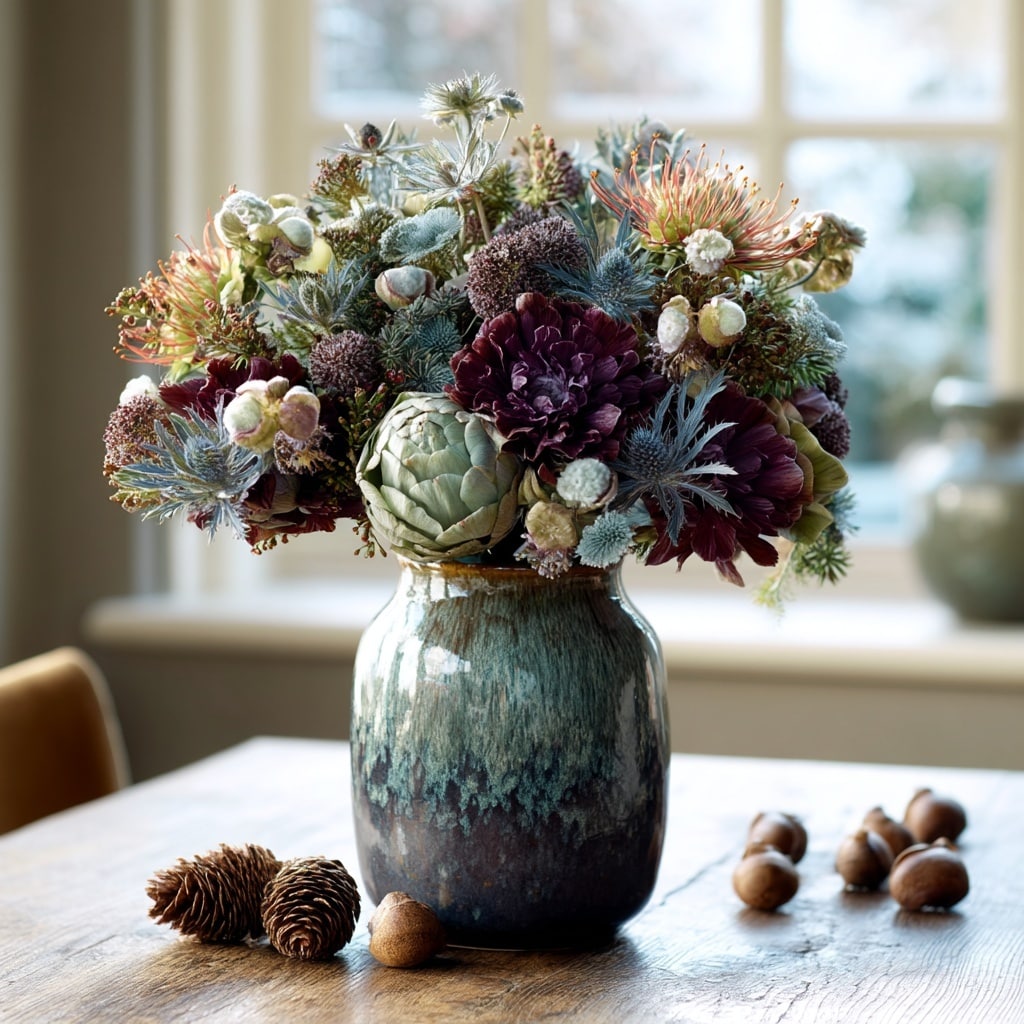
Once you’ve selected your favorite winter flowers, the fun part begins—arranging them in ways that brighten your space, reflect your personal style, and complement the season. Whether you prefer simple pots or elaborate displays, the right arrangement can make your winter blooms feel like part of your home’s decor.
Use Strategic Placement to Brighten Spaces
Position winter flowers where they’ll have the greatest visual and emotional impact:
- Kitchen countertops: Add a cheerful Cyclamen or Kalanchoe.
- Entryways and hall tables: Try Amaryllis in a bold ceramic pot.
- Living room corners: Fill large planters with Peace Lilies or Bird of Paradise.
- Bathrooms: Use humidity-loving plants like Orchids and Anthuriums.
Mix heights and colors to add dimension. A cluster of 3–5 pots in varying sizes often looks more intentional and stylish than one large centerpiece.
Choose Seasonal Colors and Complementary Combinations
Winter arrangements don’t have to stick to red and green. Play with these stylish palettes:
- Classic Winter: White Hellebores, red Poinsettias, and silver pots
- Modern & Minimal: Mauve African Violets with pale green succulents
- Warm & Cozy: Deep purple Orchids paired with soft pink Begonias
Combine different textures—such as fuzzy African Violet leaves with the smooth, shiny petals of Anthuriums—for visual contrast.
Creative Display Ideas
Here are some easy yet elegant ways to display your winter flowers:
- Hanging baskets: Perfect for trailing plants like Lipstick Plant or Christmas Cactus
- Repurposed containers: Use old teacups, mason jars, or vintage tins for African Violets or Cyclamen
- Terracotta groupings: Cluster mini pots of Kalanchoe or Begonias on a sunny windowsill
- Holiday centerpiece: Combine Amaryllis, Ivy, and pinecones in a long wooden tray for your dining table
Incorporate Greenery and Accents
Mix winter flowers with:
- Fresh herbs like Rosemary or Lavender
- Evergreen sprigs (Eucalyptus, Pine, Juniper)
- Dried elements (berries, wheat stalks, twigs) for texture
- Ribbons, twinkle lights, or seasonal figurines for holiday flair
These additions help extend your arrangement’s visual interest and fill in gaps between blooms.
Go Faux (If You Must)
If you’re short on time or struggle with plant care, high-quality faux winter flowers can offer beauty with zero maintenance. Look for silk or latex versions with realistic stems and colors, and mix them with fresh greenery for a more convincing display.
By combining texture, color, and creativity, you can turn your winter houseplants into living decor that sparks joy every time you walk by.
Section 6: How to Care for Indoor Winter Flowers

Even the most beautiful winter flowers need the right care to stay healthy and blooming. During the colder months, indoor conditions change — less sunlight, drier air, and fluctuating temperatures can all affect plant health. Here’s how to keep your blooms happy from December through early spring.
Watering Wisely
Overwatering is one of the most common mistakes with winter houseplants. Because many plants slow their growth in cooler months, their water needs drop too.
General watering tips:
- Always check the soil before watering. Stick your finger an inch into the soil—only water if it feels dry.
- Water from the base for sensitive plants like Cyclamen or African Violets to avoid leaf rot.
- Use room-temperature water to prevent shocking the roots.
💡 Tip: Use a moisture meter if you’re unsure—it removes the guesswork.
Boost Humidity the Right Way
Most winter flowers prefer humidity levels around 40–50%, but indoor heating often drops it well below that.
To increase humidity:
- Use a humidifier near plant groups.
- Place pots on pebble trays filled with water (but keep the pot base above the water).
- Group plants together to create a shared humid microclimate.
- Mist occasionally—but avoid overdoing it, especially on fuzzy leaves like those of African Violets.
Light Requirements
Winter days are shorter, and the light is weaker. Move your plants closer to windows or use grow lights to supplement.
- South-facing windows: Ideal for Kalanchoe, Desert Rose, and Bird of Paradise
- East or west windows: Great for Orchids, Anthurium, Cyclamen
- North-facing or dim areas: Stick with Peace Lily, Snake Plant, or African Violet
Clean the leaves every couple of weeks so they can absorb more light.
Keep Temperatures Stable
Fluctuations in temperature can cause buds to drop or leaves to wilt.
- Ideal range: 65–75°F (18–24°C) during the day, slightly cooler at night
- Avoid cold drafts near windows and hot, dry air from vents or radiators
- Cyclamen and Hellebores prefer slightly cooler indoor spots (around 60°F)
Pause on Fertilizing
Most winter flowers are not in active growth during the cold months, so fertilizer is usually not needed until spring.
Exceptions:
- Orchids and Anthuriums may benefit from monthly feeding using diluted, bloom-specific fertilizer if they’re still actively flowering.
Too much fertilizer during dormancy can cause root damage or leaf browning.
Keep It Clean
- Remove dead flowers or yellowing leaves regularly to encourage new growth and prevent mold.
- Inspect for pests like spider mites or fungus gnats, which can thrive in dry, warm indoor environments.
Section 7: Troubleshooting Common Winter Plant Problems
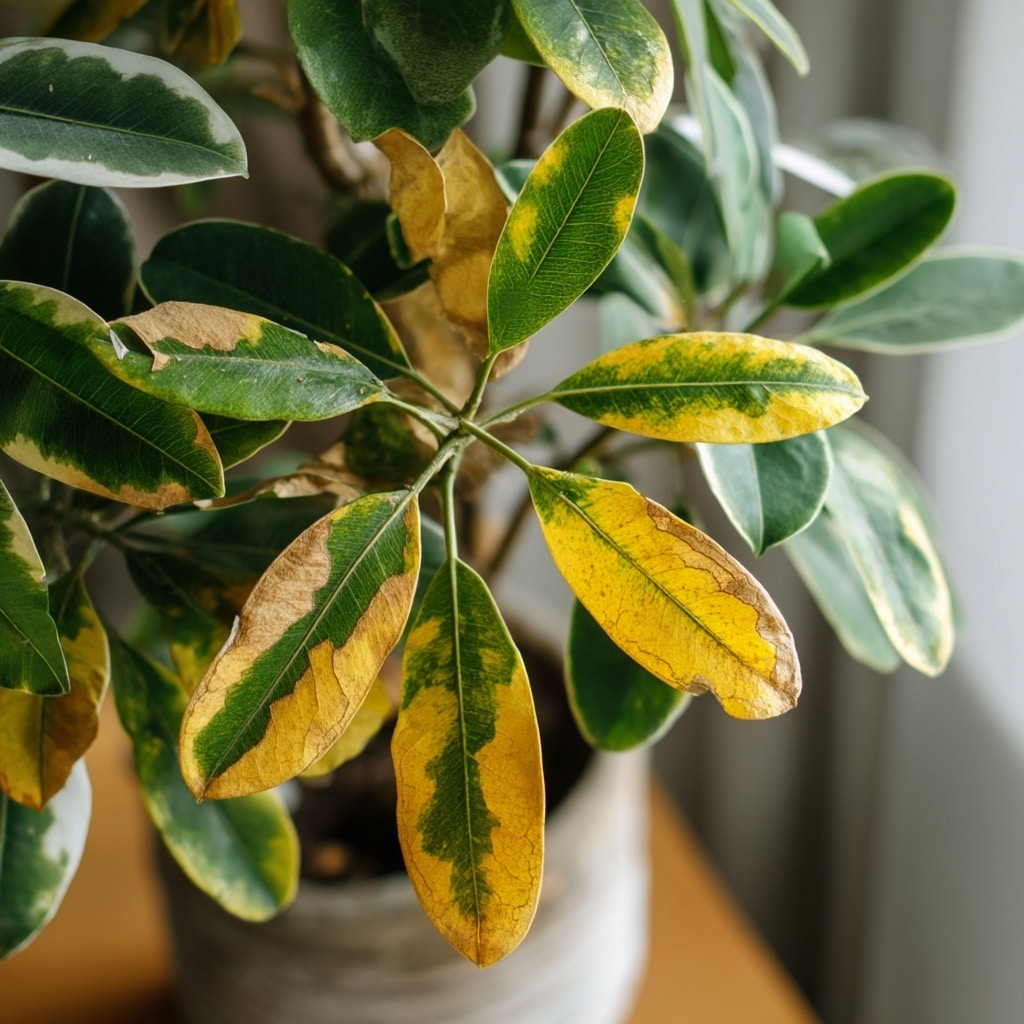
Indoor gardening during winter comes with a few challenges: less light, dry air, and temperature swings can cause even healthy winter flowers to struggle. Here’s how to diagnose and fix common problems before they get out of hand.
Problem 1: Yellowing Leaves
Likely Cause: Overwatering or poor drainage
Too much water causes roots to rot, starving the plant of oxygen.
Fix:
- Check for soggy soil and root rot
- Let the soil dry before watering again
- Repot with fresh, well-draining soil if roots are mushy
Problem 2: Wilting or Drooping Leaves
Likely Cause: Underwatering, overwatering, or cold drafts
This one’s tricky—wilting can be caused by both too much and too little water.
Fix:
- Check the soil moisture first
- Move the plant away from windows or doors where cold air may be sneaking in
- Maintain a steady room temperature above 60°F (15°C)
Problem 3: Pale or Bleached Leaves
Likely Cause: Too much direct sunlight
Even in winter, some bright spots can be too intense for delicate indoor plants.
Fix:
- Move plant to a location with filtered or indirect light
- Rotate the pot weekly so all sides get even light exposure
Problem 4: Leaf Drop
Likely Cause: Sudden changes in temperature or location
Some plants, like Poinsettia or Desert Rose, may drop leaves if they experience shock.
Fix:
- Avoid moving plants between warm and cold rooms
- Don’t place them near heaters, radiators, or drafty windows
- Be patient — some plants regrow leaves once stabilized
Problem 5: Pests (Yes, Even in Winter)
Indoor conditions can attract pests like:
- Spider mites: Look for webbing under leaves
- Mealybugs: White, cotton-like clusters
- Fungus gnats: Tiny black flies hovering near soil
Fix:
- Isolate affected plants
- Wipe leaves with neem oil or insecticidal soap
- Let topsoil dry out to kill gnat larvae
Problem 6: No Blooms?
Likely Causes:
- Insufficient light
- No dormancy period (especially for Amaryllis and Jasmine)
- Overfertilizing
Fix:
- Increase light exposure
- Mimic dormancy by reducing water and keeping the plant cool for a few weeks
- Hold off on fertilizing until new growth appears
With a bit of observation and some simple adjustments, you can quickly bring struggling winter flowers back to vibrant health. And the reward? A cheerful, blooming home during the year’s most colorless season
Conclusion
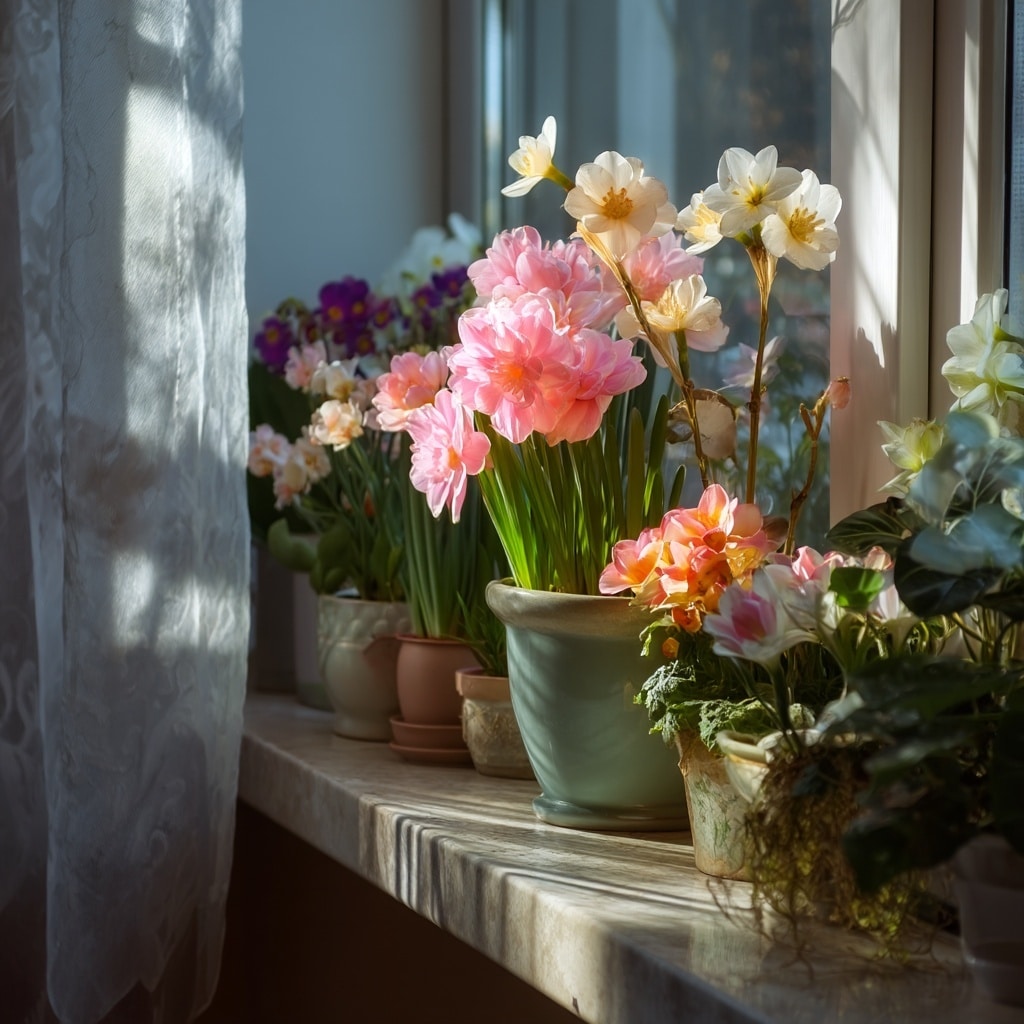
Bringing winter flowers into your indoor space is one of the simplest and most rewarding ways to stay connected to nature during the colder months. Whether you choose easy-care bloomers like Christmas Cactus and Kalanchoe, or more exotic showstoppers like Orchids and Bird of Paradise, there’s a plant that fits every lifestyle and lighting condition.
By paying attention to light, temperature, and watering habits, your winter indoor garden can thrive with minimal effort. These plants not only brighten up your home—they lift your mood, purify the air, and give you something beautiful to care for during the darkest time of year.
So go ahead—find a sunny windowsill, pick a pot, and let your winter blooms take center stage.


